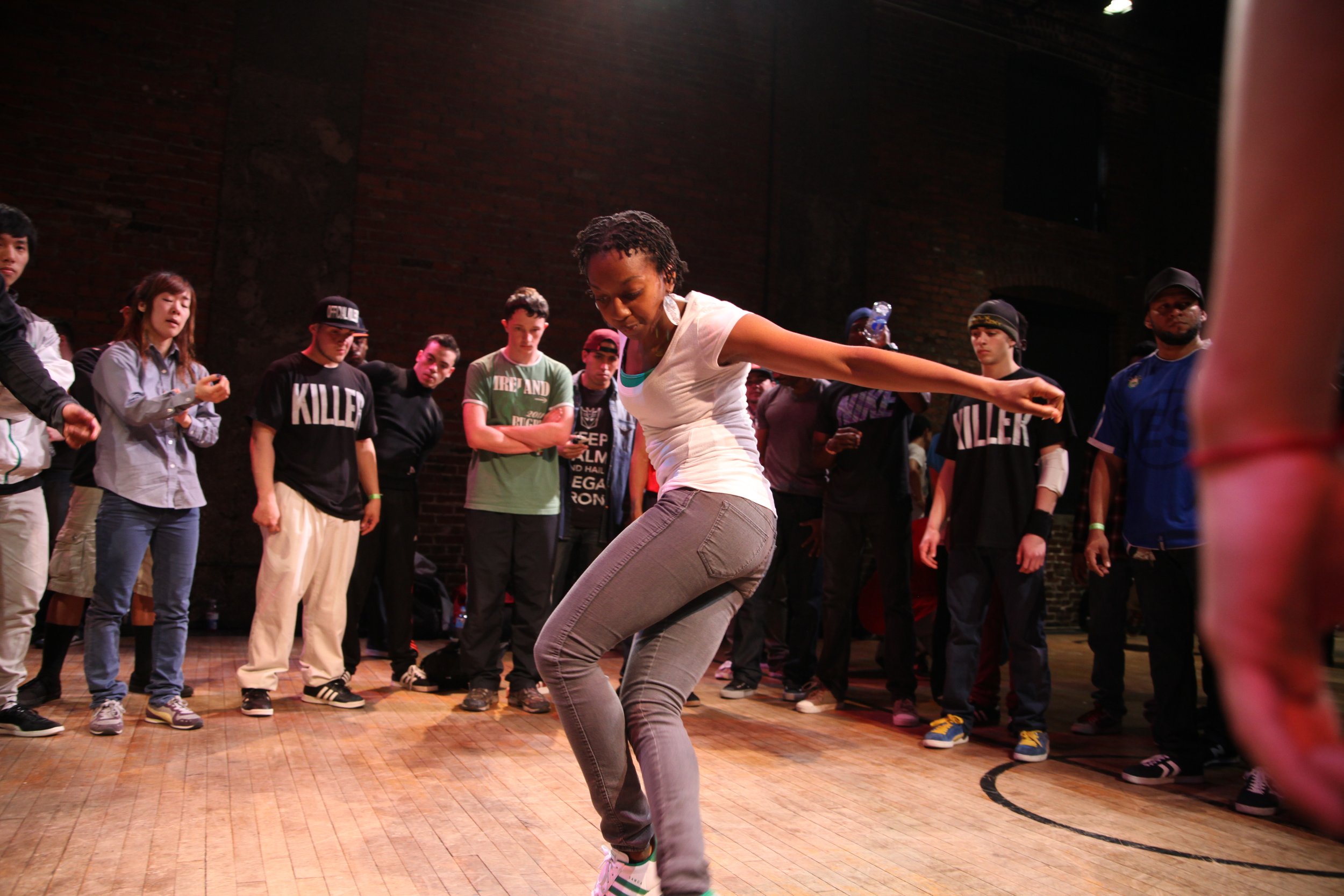“As Breaking started coming back into style it was getting to be a mix of breaking with house [dance] and freestyle in the clubs and raves, so to get more information on breaking we had to go to DC or NYC,” he said. “The young kids in both places were getting better and I started to feel like Philly would soon be out of the loop. I realized there were younger cats breaking. Because I’m black and Rennie, as my elder, gave me the info to be able to work and make money off of doing what I loved to do, I felt that we had to do the same thing. I was mainly doing it for everyone, but I had a sweet spot for a lot of the younger Black dudes because we were the minority. It was mostly Asian and Latinx. people I felt there had to be an investment in black B-boys and in the b-boy scene in Philadelphia.”
Cricket and Viazeen began teaching classes at Kumquat Dance Center to train the next generation of Black b-boys in the 1990s although the dance trend in the Black community in Philly had changed to party dancing, thus leaving space for people in other cultures to excel at breaking.
Both Husain and Cricket attribute the lack of Black presence in Philly’s breaking scene during that period due to the rapid change of cultural evolvement in the Black community, and not just cultural appropriation from other cultural groups.
“When we were slaves, the only freedom we had was creative freedom and that’s why we didn’t sing like everyone else. Folks felt like they couldn’t be free anywhere, so they were going to be free in the way they dressed, free in their music. They decided to change the way they talked,” Cricket said. “We were constantly flipping stuff. Black Americans, especially black youth, took that trend of flipping things and ran with it. Black artists will leave something behind, and other cultures will be like ‘let me get that’. We do get marginalized in a way, but we also just evolve.”
Husain echoed Cricket’s sentiment.
“When I really started Breaking nobody was breaking,” he said. “Everyone in uptown in Germantown was doing party dancing or a version of popping, the Philly-style popping.
Breaking wasn’t the “in” thing anymore. The Black community creates so many dances. You have to do and focus on what’s in style at that moment.”











